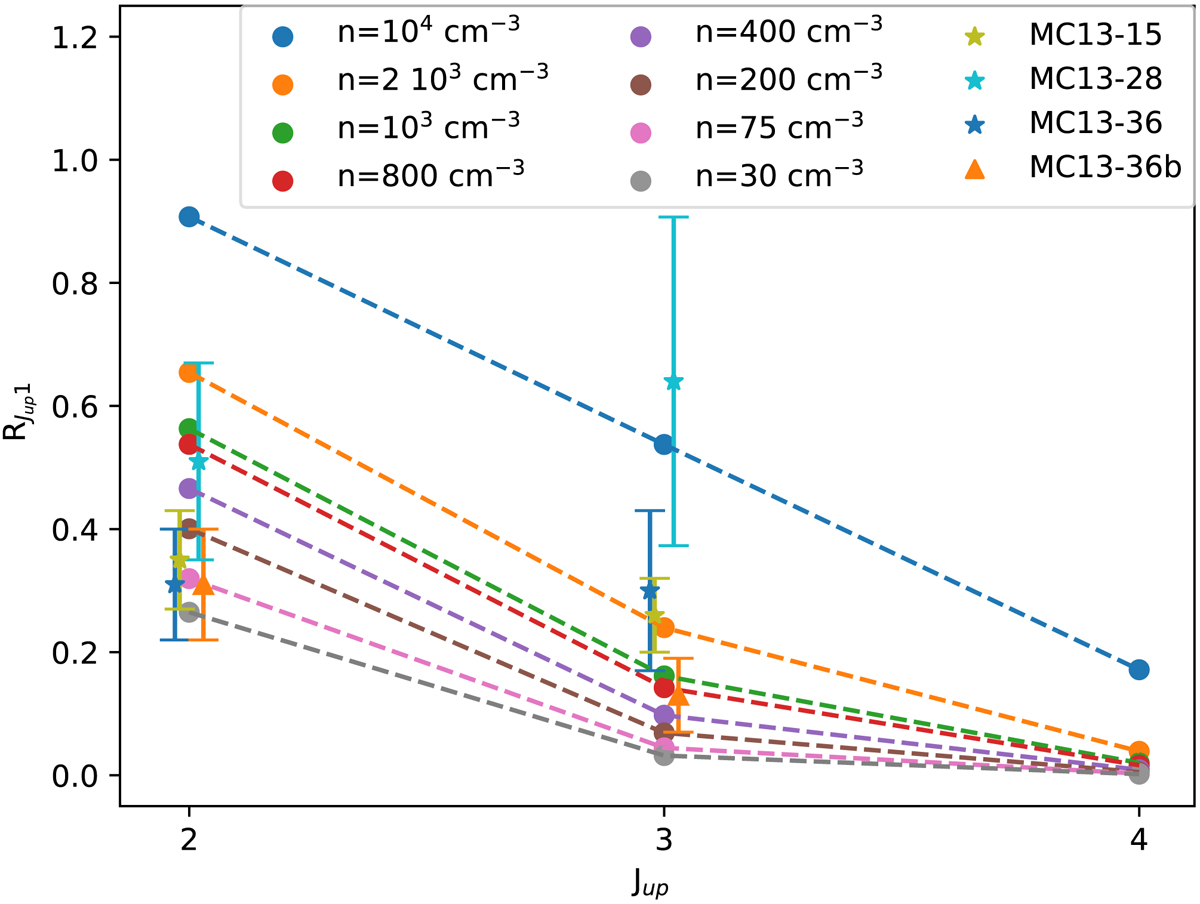Fig. 14.

Comparison of the CO line ratios observed for 3 positions of the circum-nuclear disc with RADEX simulations. As discussed in the text, we ran RADEX simulations assuming a large velocity gradient with a kinetic temperature of 15 K and NCO/ΔV = 1.9 × 1016 cm−2 km−1 s. The bullets indicate the results of these simulations for different volume density (n). We superimposed the R21 line ratios computed in Table 5, and R31 ratio derived from the CO(3-2) James Clerk Maxwell Telescope observations of Li et al. (2019). For the positions 15 and 28, there is a good velocity agreement, while Li et al. (2019) have found a different CO(3-2) velocity for the position 36, when compared to our measurements. This is why there are 2 points corresponding to this position. The measurement uncertainties are shown for each point. Interestingly, most R21 points are incompatible with a critical density and the R32 points at 2σ.
Current usage metrics show cumulative count of Article Views (full-text article views including HTML views, PDF and ePub downloads, according to the available data) and Abstracts Views on Vision4Press platform.
Data correspond to usage on the plateform after 2015. The current usage metrics is available 48-96 hours after online publication and is updated daily on week days.
Initial download of the metrics may take a while.


